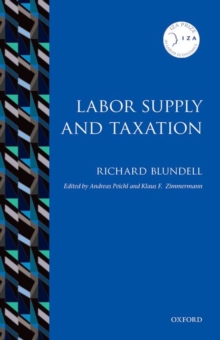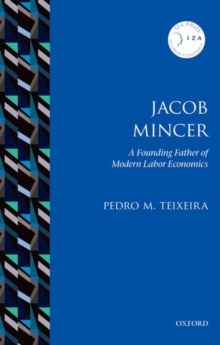
Gender, Inequality, and Wages Paperback / softback
by Francine D. (Frances Perkins Professor of Industrial and Labor Relations and Professor of Econ Blau
Edited by Anne C. (Senior Research Associate, IZA and Assistant Professor, Erasmus University Rotterda Gielen, Klaus F. (Director of the IZA and Professor of Economics, University of Bonn) Zimmermann
Part of the IZA Prize in Labor Economics series
Paperback / softback
Description
In all Western societies women earn lower wages on average than men.
The gender wage gap has existed for many years, although there have been some important changes over time.
This volume of collected papers contains extensive research on progress made by women in the labor market, and the characteristics and causes of remaining gender inequalities.
It also covers other dimensions of inequality and their interplay with gender, such as family formation, wellbeing, race, and immigrant status.
The author was awarded the 2010 IZA Prize in Labor Economics for this research.
Part I comprises an Introduction by the Editors. Part II probes and quantifies the explanations for the gender wage gap, including differential choices made in the labor market by men and women as well as labor market discrimination and employment segregation.
It also delineates how the gender wage gap has decreased over time in the United States and suggests explanations for this narrowing of the gap and the more recent slowdown in wage convergence.
Part III considers international differences in the gender wage gap and wage inequality and the relationship between the two.
Part IV considers a variety of indicators of gender inequality and how they have changed over time in the United States, painting a picture of significant gains in women's relative status across a number of dimensions.
It also considers the trends in female labor supply and what they indicate about changing gender roles in the United States and considers a successful intervention designed to increase the relative success of academic women.
Part V focuses on inequality by race and immigrant status.
It considers not only race difference in wages and the differential progress made by African-American women and men in reducing the race wage gap, but also race differences in wealth which are considerably larger than differences in wages.
It also examines immigrant-native differences in the use of transfer payments, and the impact of gender roles in immigrant source countries on immigrant women's labor market assimilation in the U.S. labor market.
Information
-
Out of stock
- Format:Paperback / softback
- Pages:564 pages, 15 Figures and 107 Tables
- Publisher:Oxford University Press
- Publication Date:30/06/2016
- Category:
- ISBN:9780198779971
Information
-
Out of stock
- Format:Paperback / softback
- Pages:564 pages, 15 Figures and 107 Tables
- Publisher:Oxford University Press
- Publication Date:30/06/2016
- Category:
- ISBN:9780198779971










